People have been asking me, “Why dance Flamenco?”
It has been hard to find a logical explanation. The only thing I could come up with was “I don’t know, it’s something that I’ve found and can’t give up”. Today I have the answer.
I discovered flamenco ten years ago by attending a few live shows in Vancouver and Barcelona. A computer engineer by education, I have spent all my working life in the fast-paced world of IT. Dancing has been a hobby, just like skiing, kayaking, hiking, cycling, travelling, but it wasn’t a serious one. However, after those shows, an inexplicable attraction towards flamenco dancing pushed me to “give it a try”, despite being well into my adulthood, with no formal dancing or musical training. Little I knew that it would become a lifelong passion.
I started taking classes and, throughout the years, I had the chance to perform in student shows. It was a great experience for me, as I had never danced before in front of an audience. I loved practising, learning and knowing the choreography, putting on a nice costume and makeup, but I could never get comfortable on stage. About four years ago I considered quitting because I was convinced that I’m simply not made to perform in front of people.
I’m glad I didn’t, as I realized later that I had it all wrong. What I was really missing was the very foundation of the flamenco dancing. Understanding, learning how to listen to the cante (singing) and the guitar, changed it all for me. Ironically, there were the COVID restrictions from 2020-2022, surmounted by a very passionate and determined flamenco teacher, which enabled this change.
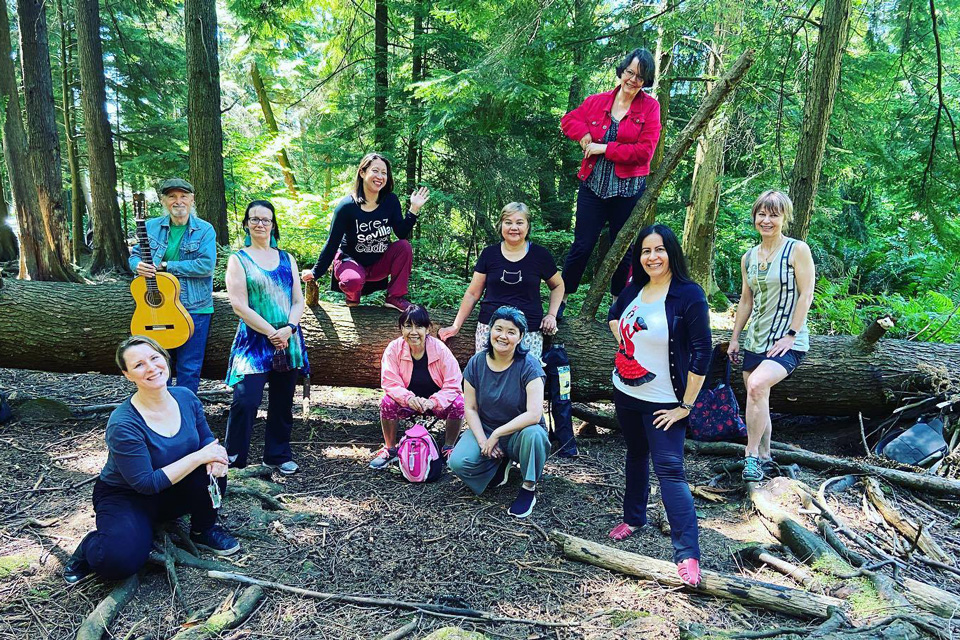
In the fall of 2020, we were able to gather in a group of maximum six people. Kasandra recruited Gerardo Alcala (Gary), world class flamenco guitarist, one of the fathers of flamenco in Vancouver, and organized “Bulerias por Fiesta” classes in her backyard and in the Grouse Mountain forest. We were literally in the forest! I was skeptical about taking a bulerias class because bulerias has a reputation of being hard to understand. But I joined anyway because I did miss dancing live!
The first class I went to, Kasandra handed out sheets of paper with two letras (lyrics) and started teaching us about tuning up the voice, tones, semitones, Phrygian key, Flamenco notes, and sang for us.
OK, I’m thinking, “This is interesting.”
Next, she gets us to sing! My eyes popped! I’m in the wrong class, I don’t have a singing voice, I thought we would dance! There was no time for protest, so I sang, and no one fell off the chair. As Gary was strumming guitar chords, he explained the palo (song form), soniquete (rhythm) and accents for bulerias. I was amazed by the patience with which he shared this knowledge, which is trivial for him but gold to us. My turn came to dance, or rather, just do a few steps ”en compas” with Gary on guitar and Kasandra singing.
“…Must I really dance by myself in front of everyone?”
I wished I could evaporate and disappear, terrified, as I was not used to dancing solo, even in such an informal setting. I could not even hit the 12th or 6th beats, so I had to start from scratch. I gradually stopped thinking about how I was dancing and turned focus to listening to the guitar and Kasandra’s voice intonations. Along the way, I was guided, corrected, and encouraged. There was no judgment, only support and a reality check…this was going to take a loooot of practice.
While I was driving home, I felt that something has changed inside me. I was happy and energized. I was starting to understand the flamenco dance and art form the way it was meant to be. I wanted to dance with live guitar and music, and to be surrounded by people. I continued to practice throughout the pandemic period and took advantage of any class offering, either in person or Zoom. There was something to learn with every new move, letra and the more I got to feel it, the deeper the joy of dancing flamenco was growing inside me.
In 2022, the opportunity came for me to be part of the Al Mozaico Flamenco Dance Academy’s Cuadro show, scheduled for December. Performing a solo on a theatre stage, with live music, was a challenge that was going to push me well beyond my boundaries, pretty much like my paragliding experience … with more time to prep for it.
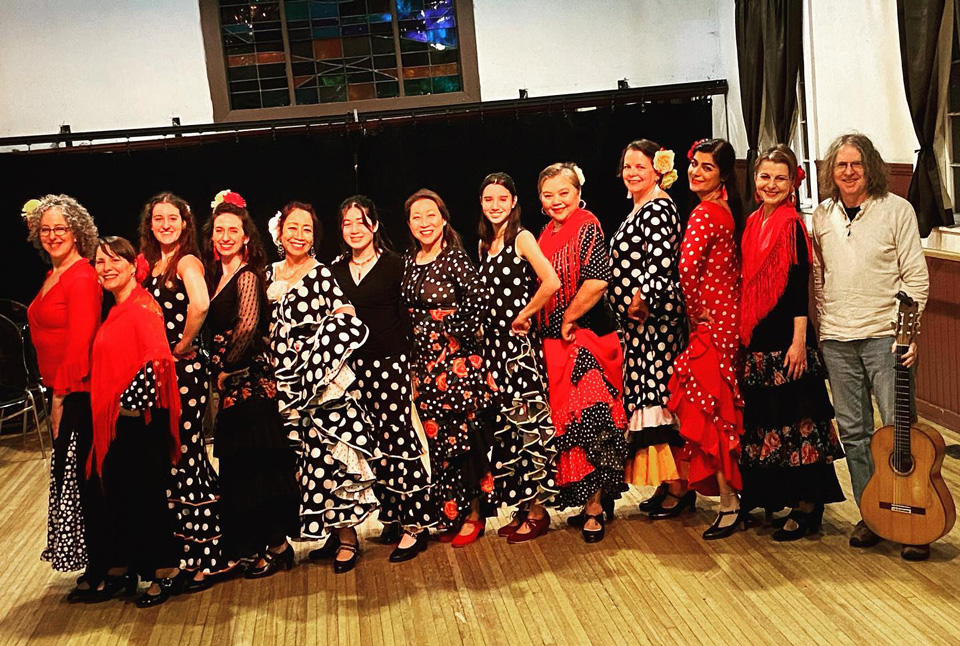
I joined the Cuadro specialized classes which gave me the chance to practice my dance (Tangos del Titi) with different guitarists including Peter Mole, Gerardo Alcala (Gary), Josue Tacoronte, and different singers, Jafelin Helten and Oscar Nieto. Early 2022, we could not have live shows, so we had virtual ones, streaming live on Facebook. I could not see the spectators, but the pressure was the same for me! Later in the year, I got the chance to perform in a small environment for 50 people at the Sunday Salon Series. I was still very nervous to dance solo. I made mistakes, but I was also enjoying it, and that was huge for me.
I could feel that with every run of my choreography, during a class and in performances, I was more comfortable with the live cante and guitar. I was getting used to the fact that I had to be ready for the variations that live musicians presented. I was able to adapt and recover from a missed step or different cante interpretations. People were watching, but I didn’t want to evaporate anymore, I wanted more of it.
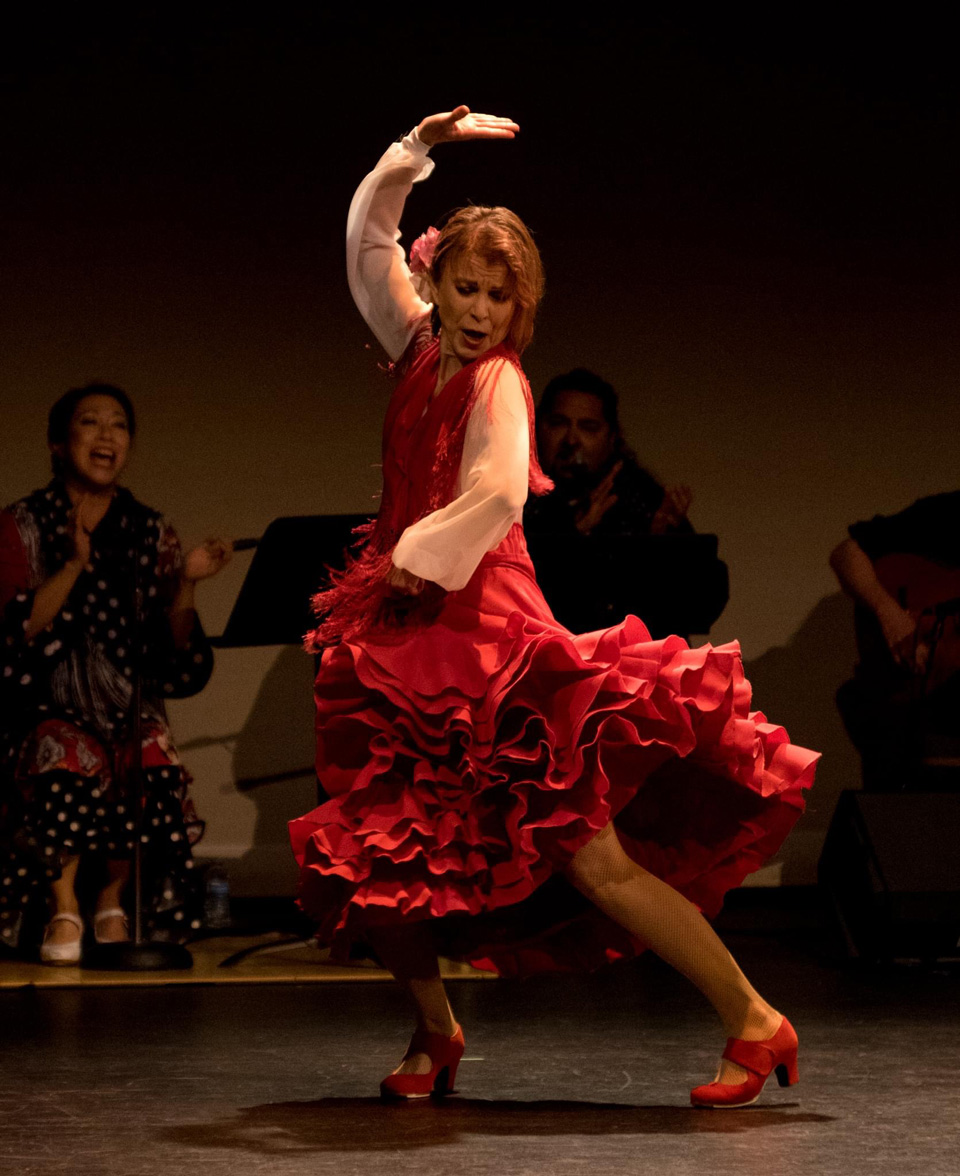
Performing for Cuadro 2022 was a dream come true, an unforgettable experience. I was in a state of “controlled nervousness” before my act, but somehow, just after the first few guitar strums, I managed to forget that I was on the stage. I just immersed myself into the cante of Vicente Griego “El Cartucho”, the guitar, I absorbed the energy of my cuadro group and danced. It was six minutes of fame that went by like a blink, when I felt the whole world was mine. Once I got off the stage, I was wondering how it went and, without asking anyone, I got hugs and congratulations from my dance mates, a priceless gesture.
I felt happy, relieved, and eager to do it again. For the first time, I thoroughly enjoyed being on a stage. Yes, it did take quite a bit of practice and determination to get here, and there were lots to learn from Mi Maestra, Kasandra “La China”, who mentored me throughout the year, but it didn’t feel like work.
So, why do I dance Flamenco? It is for its empowering and liberating energy. It forces me to be authentic. It keeps challenging me, pushes me beyond my boundaries and enables me to grow as an artist and a person. Learning the art of flamenco has taught me so much about myself and how to live life. We aim to be perfectionists when we practice, but the mastery and joy comes from managing the imperfections during the performance. And last, but not least, it is because I value the community spirit that I found in the flamenco artists and cherish the intergenerational knowledge sharing.
Born and raised in Romania, I have been calling Vancouver home for almost thirty years. A unique life opportunity is taking me now around the world and fulfilling my old passion for travel. One of the things I’ve packed along is my love for flamenco. I know it will be harder to practice, but I refuse to think it would be impossible. One thing is for sure. I have no plans to stop. As I continue my flamenco quest, I am curious to see what I will discover as I walk on my new life path. I hope more “Cante por Bulerias”!
“Cantame Por Buleria”
Blog by Cristina Dwyer, currently based in Seoul, Korea
23/02/28
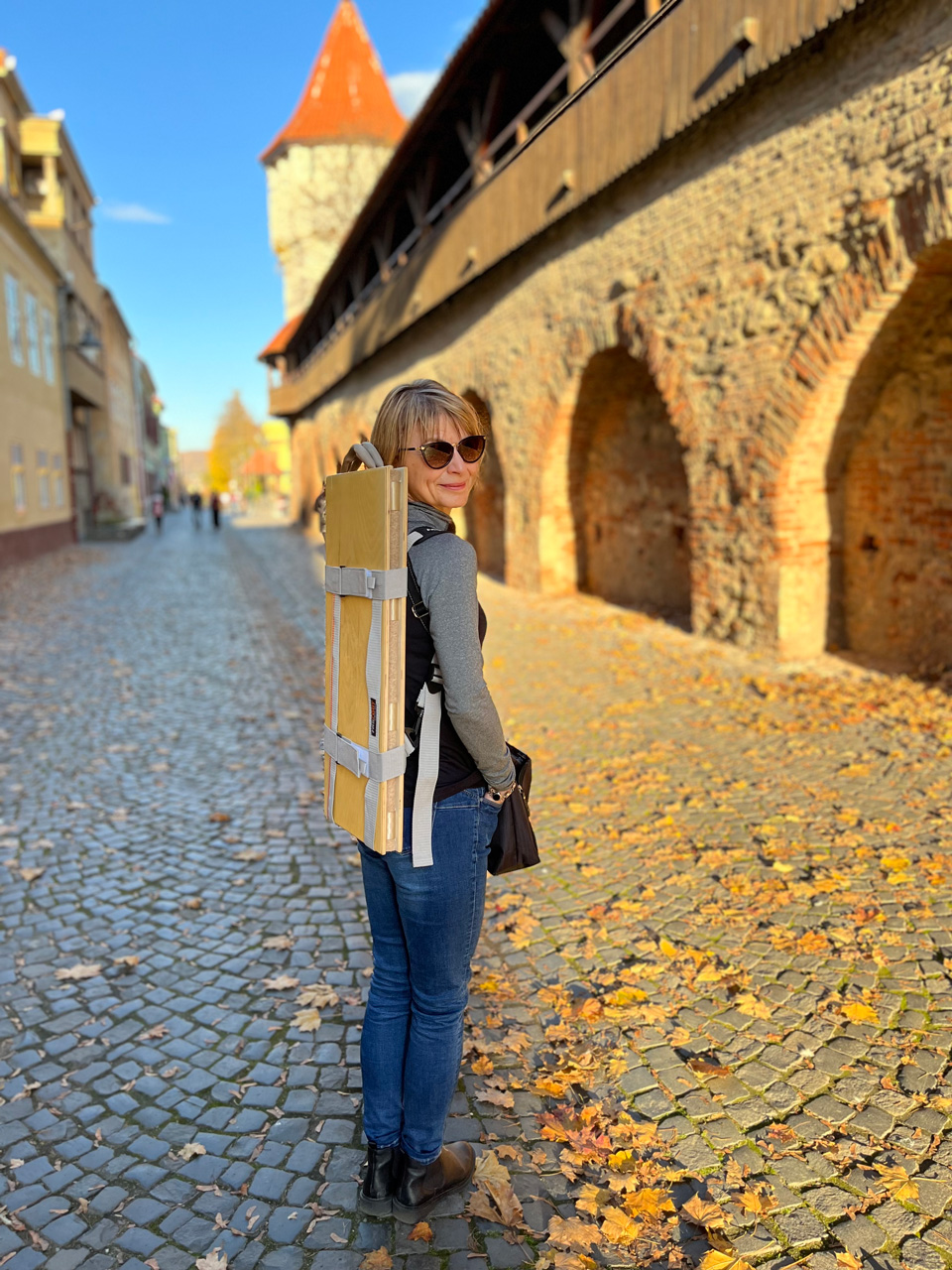
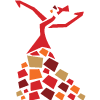
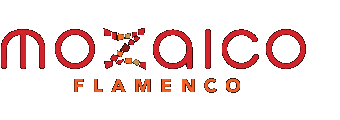
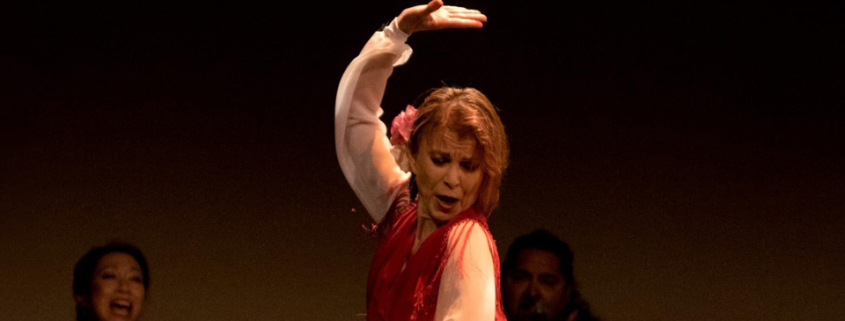

¡Qué maravilla! Your description of becoming a real flamenco-butterfly went to my heart. I live in Spain, I even wrote books about the flamenco phenomenon, and yes, you deffinitely must have the duende in you. What a bless! Congratulations!